8 essential Corvette race cars you should know
In celebration of our first drive review of the rip-roaring new Corvette Z06, we got to cooking on a list of the coolest—and most unique—Corvettes to ever cross a finish line. After all, the package began as a low-profile effort to put competition parts in the hand of SCCA’s A-Production racers. This was back in the 1960s, when GM elected to (officially) withhold factory support in motorsports in the years following the tragedy at Le Mans. For less than two grand, “Zora’s Option 6” delivered a 360-horsepower 327-cubic-inch small block, aluminum wheels, a limited-slip diff, and more robust suspension components including a larger sway bar and stiffer springs.
Shortly thereafter, a Z06 first found victory lane at the hands of Mickey Thompson and Doug Hooper. And while Z06-specific victories represent a slim slice of the Corvette’s overall racing triumphs, much of the marque’s success, whether on a road course or a drag strip, should be attributed to those primordial Corvette competitors. Cheers to the Z06; thanks for keeping the lights on.
Betty Skelton’s 1956 Corvette
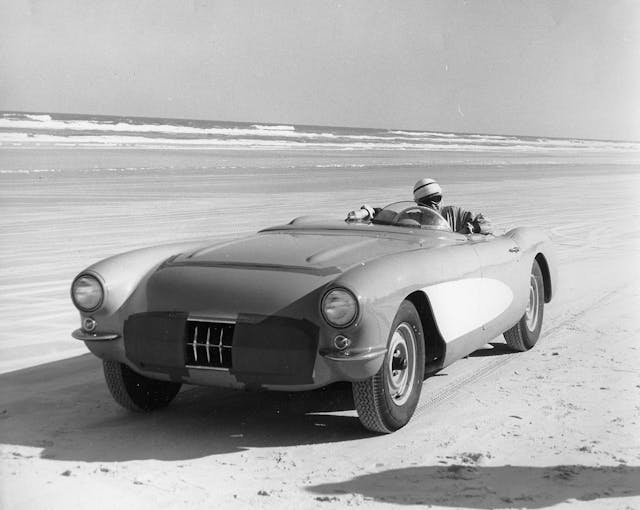
Naturally, before the Z06 package ever graced GM’s option list, hot-rodded Corvettes still found their way to the track. The model’s first-generation was more than a worthy canvas for go-fast alterations. Many rolled into victory lane in national club racing. Though, arguably more unique than the roll-bar-wearing C1’s that captured checkers from Sebring to Le Mans, were the group of relatively stock appearing racers that performed speed trials on Daytona Beach.
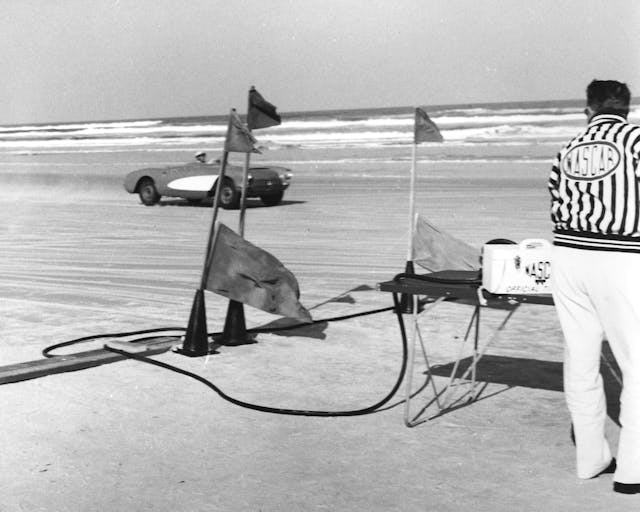
Of the Chevrolet roadster drivers, Betty Skelton was the star. Known as “The Lady of Firsts,” she was an aerobatics pilot, first, before transitioning to competition on four wheels. She was the first woman to pace the Daytona 500 as well as the first woman to test drive for Chrysler. Skelton was also the first woman to be inducted into the Corvette Hall of Fame. Pictured here in 1956 aboard a Vette of the same year, Skelton would end up setting three women’s land speed records on the Daytona Beach course.
Cunningham’s 1960 Corvette at Le Mans
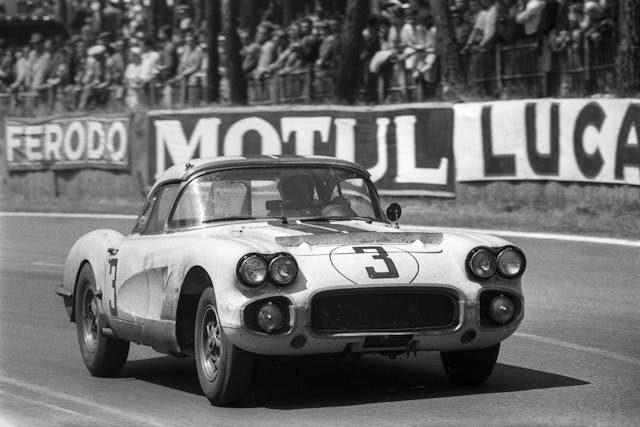
In 1960, Zora Arkus-Duntov and American privateer Briggs Cunningham teamed up to enter Corvette in its first 24 Hours of Le Mans. For the model’s French coming out party, the team used three 1960 Corvettes with go-fast goodies including 283-cubic-inch Fuelies, heavy duty brakes, a beefier suspension, and limited-slip differentials. At the conclusion of 24 hours, one of the three had upset the field of Euro counterparts Ferrari, Aston Martin, and Porsche to win the GT class—and finish eighth overall.
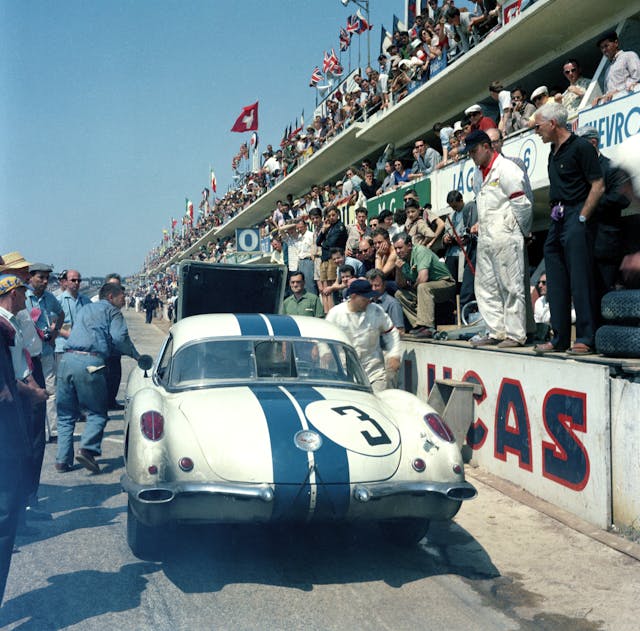
Corvette’s stellar rookie run at Le Mans would set the tone for future landmark performances at the iconic endurance race.
1963 Grand Sport Corvette
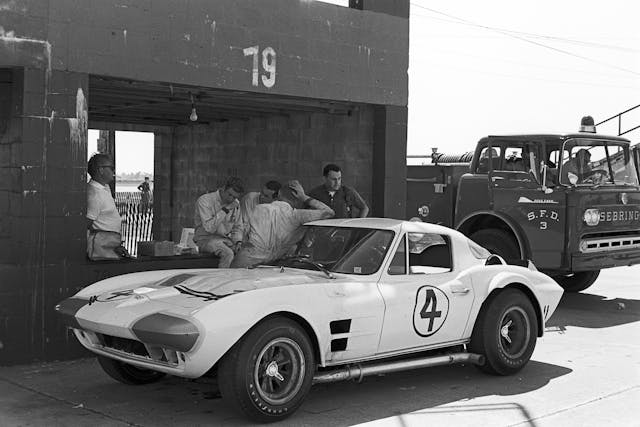
Perhaps inspired by the performance at Le Mans in 1960, Zora commissioned and oversaw the development of a lightweight, ultra-powerful apex-eater called the Corvette Grand Sport. His original plan was to build 125 lightweight homologation models to satisfy road racing’s GT rulebook. But in 1963, the program ran head-on into GM’s self-imposed racing ban and had to cease production on the racers. Still, several made it through, and of the finished Grand Sports, Zora and his team distributed them to privateer teams.
Of the rare breed, perhaps the most notable was Chassis #005, which traded hands several times between John Mecom, Jim Hall, and Roger Penkse. Before Penske became “The Captain,” and before Texan Jim Hall ever built a Chaparral race car, they teamed up to drive the Grand Sport in select races, such as the 12 hours of Sebring (shown above).
Don Kirby’s Corvette Funny Car
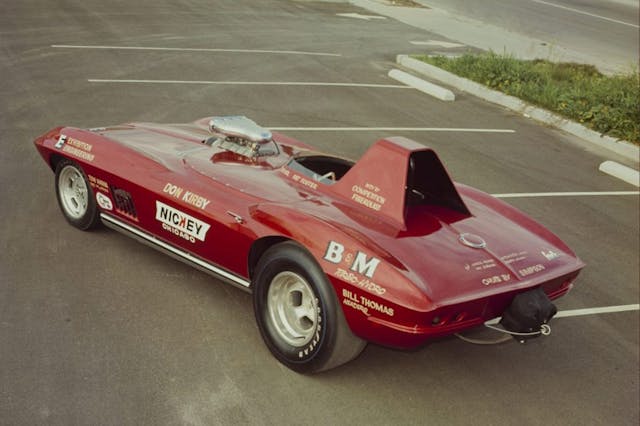
While many factory stock Corvettes infested the local drag strips from Englishtown to Lions, in period, there are a few more obscure fiberglass creations that turned heads in NHRA’s Funny Car class. Tom McEwen, the Mongoose himself, even ran a rather wicked C3-bodied flopper after his stint in Mopars.
It’s Don Kirby’s candy red second-gen funny that has us absolutely salivating. If you live life a quarter-mile at a time, the name may strike you as familiar. During the glory days of NHRA’s fiberglass funnies, Kirby owned a fiberglass repair and paint shop that was known as the Funny Car Supermarket. There, Kirby and his team could make, paint, letter, and mount a new body. According to a profile in Hot Rod, the shop could churn out 20 painted cars in a month. As a fiberglass repair shop in the 1970s, you can imagine that a fair number of damaged Plastic Fantastics rolled into the garage bays. Perhaps, this is why Kirby elected to utilize a C2 for his personal flopper. “When [Kirby] unveiled his ‘topless’ model, everyone took notice,” wrote Car Craft back in the day. “His first week out produced a 198 mile-per-hour shot at the lights.”
Spirit of Sebring ’76 Greenwood Corvette

Detroit-born brothers John and Burt Greenwood were Corvette’s motorsports strongmen during the 1970s and 80s. John grew up street racing down the Motor City’s Woodward Ave in his 1964 Corvette, before eventually turning to SCCA competition where he won early and often.
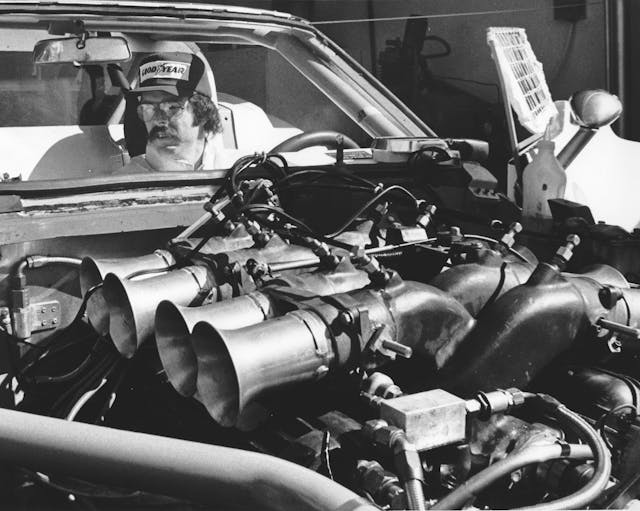
The duo’s most famous creations were their wide-body third-gen Corvettes which tap-danced between rulebook margins. Its first iteration debuted on the floor of Cobo Hall for the 1974 Detroit Auto Show. The second group of Greenwood C3s featured coil overs on all four corners and an even more aggressive aero package, like the Spirit of Sebring ’76 pictured here. Under the Revolutionary scheme, boomed a different type of canon—a 467-cubic inch aluminum big-block V-8, producing north of 700 horsepower.
Hendrick Motorsports’ Corvette GTP racer

It may come as a surprise that a mid-engine Corvette raced in professional road racing competition over three decades before the first mid-engine Corvette road car was born. Gm partnered with Lola to create a purpose-built tube frame sports car draped in a very loose interpretation of fourth-gen Corvette bodywork. Save for some stickers and maybe the nose, it was a stretch to call the beast a Corvette. Beginning in 1984, the IMSA grid featured a couple of these GTP racers with car-specific powerplants. Lee Racing campaigned a 5.7-liter V-8 block, while Hendrick Motorsports (pictured here) used a 3.4-liter turbocharged V-6 in its Goodwrench-liveried ‘Vette.
Corvette Racing’s C5.R
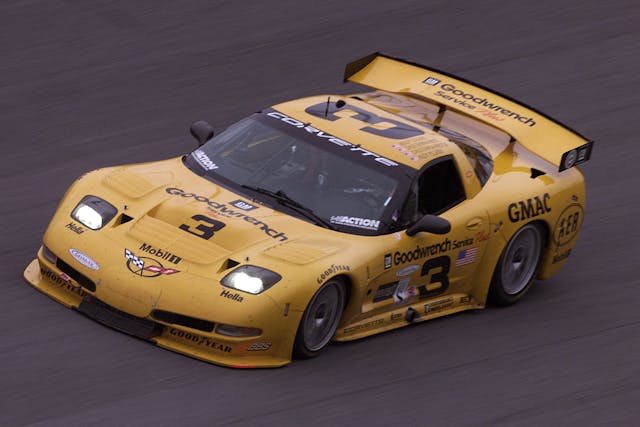
In the early-1990s racing manager Doug Fehan convinced GM to campaign its C5 Corvette—which was mid-development—and eventually enlisted car builders Pratt & Miller to transform the develop the model into a purpose-built road racer. The car debuted on the grid of the 1999 Rolex 24 Hours of Daytona.
Two years, one first Le Mans debut, and a first win later Corvette Racing was back at the Florida high banks, this time, with “the Intimidator” Dale Earnhardt and his son splitting driving duties with team regular Andy Pilgrim. That year was also special for the Corvette crew, as the sister car claimed first overall, a rare feat for GT cars.
Corvette Racing’s C8.R
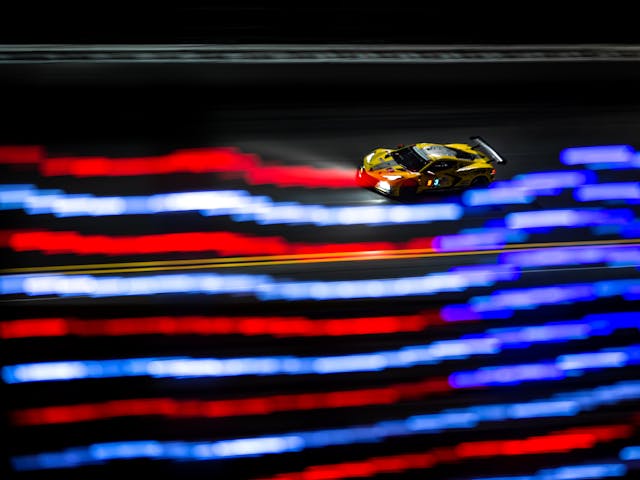
Another Pratt & Miller-built beast, the C8.R debuted in 2020, in conjunction with the release of the mid-engine production car. Featuring a race version of the LT6 small block, the 5.5-liter naturally aspirated V8 propelled the novel car to six class victories in its debut season. A year later, the mid-engine racer won its class victory in the Rolex 24, sweeping the top two steps of GT competition.

Check out the Hagerty Media homepage so you don’t miss a single story, or better yet, bookmark it.

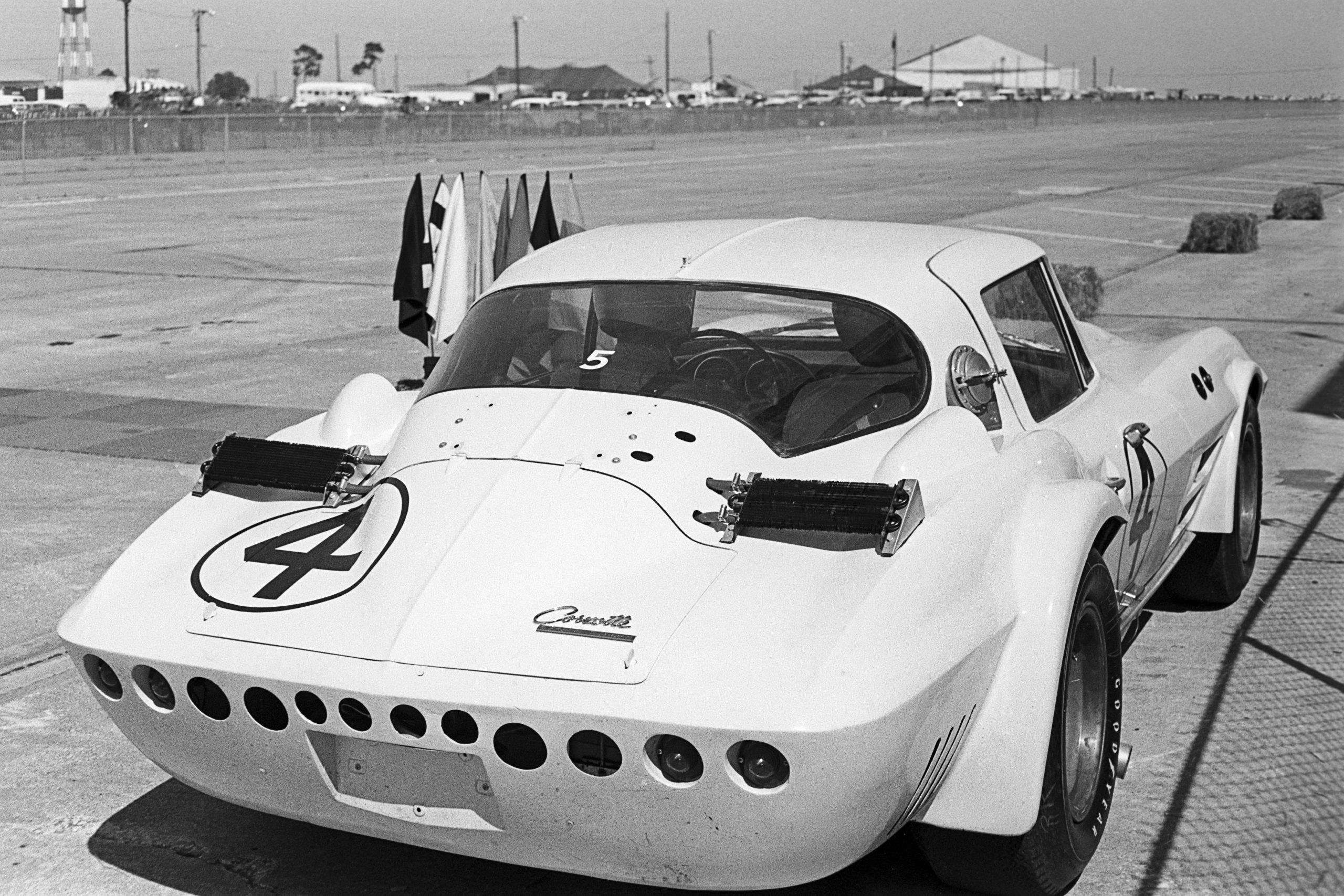



Dump the Sebring Greenwood car. The Corvette that was more significant were the Greenwood BFG L88 cars as well as the Heinz Rebel L88.
Also the Corning Roadster.
These were much well known racers.
Bob Bondurant almost backed into my ’73 on the staging line for a couple parade laps at Laguna Seca. lol
I remember seeing one of the C@ Corvette Grand Sports driven at the Monterey Historic Races a number of years ago. Was owned by a man from Seattle.
That would likely have been Tom Armstrong.
wow…just 8? The Dow Corning Vette, JPJr Racing Vette, DX Vette, crap…that list could go on forever. Oh..as a BTW… the Grand Sport photo is Sebring not WG…
Rat Motors Forever!!!!
You are missing the SR2 in 1956. Duntov’s experimental Corvette us different from the Betty’s car and very important. Worth a mention.
A very big mention.
The article is deceiving about the Corvette success at LeMans in 1960. Corvette won its class of GT 5 liter. The only class entrants were Corvettes. It finished behind 4 Ferrari 250 SWBs which did win the GT 3 liter class. And, Ferrari won the race overall with a 250 Testa Rossa.
I had a hard time seeing the Hendrick Motorsports’ Corvette GTP racer as a Corvette. What part of it was one? But besides that the C5.R and later cars have defined modern Corvette racing to me.
The # 3 1960 Le Mans Corvette bought back memories for me from when I worked at Bob Grossmans Volkswagen dealership in the parts department. At one of the dealerships monthly meetings Bob happened to attend , this was in the spring of 1971 and I was the proud owner of a brand new ’71 Ontario Orange 2 top LT-1 Roadster. Bob had seen the car parked in the employee parking area and wanted to know who owned that awesome car. I meekly raised my hand and he had a few questions for me about the car, was it as fast as a ’70 LT-1, told him I didnt know but he could take it for a spin up Rte. 59 and check it out , he declined my offer shaking his head with a smile on his face. This was at Foreign Cars of Rockland in West Nyack New York.
Bob Grossman’s dealership on Route 59 in West Nyack , NY was a must see/must stop by whenever you were in the area… I saw my first Ferraris and my First 427A/C Cobra in that selling lot… He was also a visionary… First Volkswagen dealership in the Metro NY area…. Made a Fortune…
You left out one very significant car, a car that just became the last of the last. The C7.R was a flipping amazing amazing car, the last of the GTE GTLM monsters, the final blowout of the front engine masterpiece.
Maybe just for me personally, but I think the C7.R will be an icon of IMSA racing forever. And it is still the last of the front engine glory, and Glorious it was!
I love Corvettes. I’m a lifelong Corvette enthusiast, SCCA sponsor, owner of several Corvettes, and Corvette history buff. All that said, and all these racing accomplishments, Corvette will always play second fiddle to Ford if they don’t win a world manufacturers championship. Quit dancing around the issue and go win LeMans 24 Hour just once. Every generation, the hype is they’ll be at LeMans. I love my Corvette heritage, but Ford will always have “oneupsmanship” until Corvette takes on the world at that event. It sure as heck worked for Ford.
The Corvettes were the only cars to run in GT5.0 for cars with engines between three and five liters at the 1960 24 hours of Le Mans. They finished behind four Ferraris that ran in GT3.0, which they should have been faster than. There were no Aston Martins in any GT class, but one of the S(sportscar)3.0 Astons finished in 3rd overall, well ahead of the highest placed Corvette. The Corvette did finish ahead of a 356B Carrera, which raced in GT1.6. It was nice that the Corvettes finished, and they did perform respectably considering their price and production volume. It doesn’t mean that they upset any of the European factories.
No mention of the c4 race cars that Tommy Morrison campaigned.
The most impressive thing was whoever drove that Sebring Fire Truck all the way to Watkins Glen for the race!
How about the 1959 Stingray? It’s amazing how many Corvette owners have never heard of the 1959 racing Stingray. Wonderful how similar in looks to the production Stingrays of 1963-67.